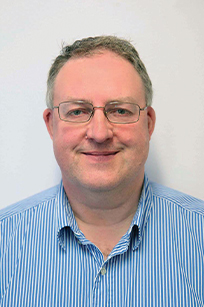Virginia Mason: cycle of improvement
 A few years ago, healthcare providers around the world looked enviously at the quality, efficiency and value gains made in Japanese car factories. Many wondered how their virtuous cycle of continuous improvement could be adapted to healthcare. The Virginia Mason Institute in Seattle is a pioneer in this area, and its work is now being brought into the NHS in England, benefiting patients, staff and the taxpayer.
A few years ago, healthcare providers around the world looked enviously at the quality, efficiency and value gains made in Japanese car factories. Many wondered how their virtuous cycle of continuous improvement could be adapted to healthcare. The Virginia Mason Institute in Seattle is a pioneer in this area, and its work is now being brought into the NHS in England, benefiting patients, staff and the taxpayer.
The NHS signed a five-year deal with Virginia Mason in 2015 to work with five trusts on implementing continuous improvements based on Lean principles (see box overleaf).
One of the trusts – Surrey and Sussex Healthcare NHS Trust (SaSH) – had a troubled recent history in terms of quality and finance. Paul Simpson, chief finance officer, explains that between 2007 and 2010, the trust had a recurrent deficit of around £25m – one of the largest deficits in England at the time. There were significant clinical problems and a high turnover in executive positions.
‘When I joined [2007], I was the fourth finance director in a year, so the trust wasn’t in a great place,’ Mr Simpson says. ‘We also had a number of quality problems, so it was not just about the money.’
An external clinical review in 2010 examined improvements in outcomes before a process of rebuilding the clinical structure of the trust. Building on this, the trust received a CQC rating of good in 2014. ‘At that point, we were circling around financial balance and we looked at what we needed to do to take us further,’ he adds.
The next step was applying to be part of the Virginia Mason programme. SaSH was successful, becoming one of the five trusts confirmed to take part in the five-year programme.
The trust’s work with Virginia Mason has been named SaSH+, with a focus on the Japanese philosophy of Kaizen, or continuous improvement.
There is often some confusion between Kaizen and Lean, and in truth there are overlaps and similarities. Sometimes the terms are used interchangeably. Kaizen requires culture change. It is a mindset that seeks to eliminate waste and variation through focusing on good processes, data, teamwork and staff engagement. It often targets small changes, though not exclusively. Organisations that adopt Kaizen often use Lean tools, which systematically focus on the removal of waste and anything that does not add value.
Sue Jenkins, SaSH director of Kaizen, says the trust board saw the Virginia Mason programme as an opportunity to make further gains. The trust’s previous work on safety, quality, patient experience and outcomes provided a platform for entering a programme of continuous improvement, she adds.
 Mr Simpson says the NHS Trust Development Authority (TDA – one of NHS Improvement’s predecessors) wanted to get five different trusts on the programme.
Mr Simpson says the NHS Trust Development Authority (TDA – one of NHS Improvement’s predecessors) wanted to get five different trusts on the programme.
‘SaSH was improving and the TDA wanted to see how we dealt with the Virginia Mason programme. The other trusts were all in different places and the idea was to see how the development and support from Virginia Mason would work in different situations.’
Training programme
The trust was admitted into the programme in late summer 2015.
Ms Jenkins and a colleague – chosen by the trust board to oversee the work – visited Virginia Mason in October that year for their first training sessions.
The training is tough, with two modules over six weeks covering the concept of Lean and improvement methodologies. There are 12 assignments in the six-week period, and all must be passed before the candidate is certified. Not only did this accreditation give them the skills to set up and run the SaSH+ Kaizen programme office (KPO), but also to train and certify colleagues locally.
Ms Jenkins, who is now a Kaizen specialist following her training, says: ‘The training with Virginia Mason offers a teaching certification – my team and I are able to use that to help people become experts in the SaSH+ methodology.’
SaSH+ consists of three main components. These are:
- Trust-wide improvement schemes – there are six value streams, including diagnostic imaging, and the trust is planning to launch a further eight streams soon
- Building capacity and capability around improvement tools, including Lean for leaders. This is a year-long training programme that is optional for existing staff. However, it is a requirement for new staff in leadership roles who are expected to sign up within six months of joining the trust
- Genba walks for leaders – allowing them to see what’s happening at the front line and give staff the opportunity to raise concerns or suggest improvements.
Value stream workshops
The value streams for the major projects are facilitated through five-day rapid process improvement workshops (RPIWs). These involve around 12 staff and three or four workshops are held each year per value stream.
The sessions begin with validating KPO data on areas such as activity that has been collected during a six-week observation period with the clinical team. They then go on to ask the staff to generate ideas for improvement. The metrics are examined 30, 60 and 90 days later to ensure that the project is delivering improvements.
The trust holds between 12 and 16 RPIWs a year, each one focused on a particular ward or department, with roll-out across the organisation. In the management of diarrhoea value stream, for example, there were six workshops, which came up with 21 improvement ideas that are being rolled out across the organisation.
Ms Jenkins says it is often the case that given the chance to shift their focus from getting the day-to-day job done – and given the permission to offer improvement ideas that can be tested – staff question and improve the basic elements of the processes they carry out each day.
For example, every patient was routinely sent for a blood test before a CT scan. The diagnostic imaging value stream saw an opportunity for better care, greater efficiency and potential savings.
‘The evidence from the RPIW was that we can reduce the number of blood tests by 75% – we have 38,000 CT outpatients a year,’ Ms Jenkins said.
‘The response was great, and it was seen as an opportunity to reduce waste, make a positive impact on patients, improve the referral times for CT scans and reduce haematology costs. It was win-win.’
She adds that the implementation is probably the trickiest part of the process, but the trust has done this well. ‘Virginia Mason has been seeking our ideas on how to do the roll-out because we have tied the process into our governance, and it is signed off by our clinical effectiveness committee before it is rolled out.’
Mr Simpson acknowledges that implementing a roll-out is not always plain sailing. In one department that was not part of a value stream, the roll-out failed. He says this was due to some of the clinicians fearing change and how it would impact on their day-to-day work. The trust is now looking at other techniques to improve the department.
‘The process is hard work and isn’t always successful, but failure is recognised as an essential part of learning. It’s about recognising the point at which the individuals involved are not going to do it.
‘We operate a broad church. A lot of people talk about turnaround versus Kaizen and we are not saying that turnaround doesn’t work.’
He adds that the Kaizen approach works, in general, at the trust, but others may find different approaches more beneficial.
The improvement workshops can mean taking staff away from their duties for five days, which potentially has an impact on frontline care. Mr Simpson says the trust has experienced issues with backfilling. The estates department, for example, argued that it could not release staff for the workshops as it could not afford to back fill.
‘I think there has to be some accountability and divisions need to think about how they will back fill,’ he says.
Ms Jenkins adds: ‘We have never had to cancel a workshop because the right people were not in the room, even during the junior doctor strikes. It is seen as important and continues to be a priority for the organisation.’
Mr Simpson continues: ‘We employ clinicians who bring substantial expertise with them and we need to allow them the time to do this and then harvest their contributions.
‘It’s been tough – as it has been for hospitals everywhere. Our A&E attendances increased by 10% in the last 12 months. There are a few financial issues, but we are helping staff to feel supported and enable them to contribute to managing these issues.’
Releasing time and costs
Departments have been able to release time by applying the SaSH+ principles – 7.5 hours of clinical time per week for cardiac clinical nurse specialists, for example, by revising their administration procedures.
As well as releasing time, SaSH+ has helped avoid costs. In one case, while waiting for funding to procure a new electronic patient record system, the trust looked into optimising the effectiveness of the medical records department. The initial outcome suggested that six new staff members would be required – although according to the records team, only three new staff were needed.
Having personally completed the Lean for leaders course, Mr Simpson says: ‘It’s very hard work and the drop-out rate is about 20%, but it’s intended to reach the greatest number of staff.’
Around 200 SaSH staff have passed the programme and a further 100 are currently taking the course.
An orthopaedic consultant who took the course used a Virginia Mason technique called ‘rooming in’ to re-examine the flow of patients in his hand clinic. He realised he was doing a lot of the admin for each new patient and as a result was seeing 12 patients in each clinic.
Now, a physiotherapist sees the patient, takes their history and presents that to the consultant, who decides on the best course of action. The number of patients seen in a clinic has now increased from 12 to 25.
The Genba walks are a vital part of the executive team’s work, Mr Simpson says. ‘We talk to staff about what they are doing; giving the executive team more contact with the front line, concentrating on what matters and what’s going on in the organisation.’
Ms Jenkins adds: ‘SaSH+ is a management system with a quality improvement model that allows all staff to practise Kaizen continuous improvement. We are building capacity and capability. Lean for leaders is one example of this and is probably the most successful partner package that came from Virginia Mason.’
She insists that SaSH+ and its embedded Lean principles are not just for senior managers, but for all levels of the workforce.
A variety of training programmes are offered, including half-day taster sessions, where some of the basic principles of Lean are taught, to one-day and more advanced programmes. This gives staff the appropriate level of skills to bring about continuous improvement in their working spaces and practices. ‘We have tried to develop our education offer so all staff can access the right type of training and apply what they have learnt,’ Ms Jenkins adds.
Staff often tackle the issue of cupboard space, both in terms of fitting in supplies and how they are organised so they can be found quickly – which can be time-critical – once they have been on a SaSH+ course.
Mr Simpson says it is important that training and rapid process improvement workshops are not top-down events.
‘We have found that the sessions create time for individuals to form their own networks, speak the same language and see the changes being made. It’s all coming from staff themselves and that’s the key thing. I can think of examples of things that didn’t work when they were rolled out because there’s a risk of the NHS telling people that they have to get on and do it, because that doesn’t always work.’
Trust ratings
 Mr Simpson believes that the success of SaSH+ can be demonstrated in the trust’s national staff survey results, where it was rated one of the best in the country among comparable acute trusts. Some 65% said that the trust had a positive safety culture and, with a total of 99% of nursing posts filled, agency nursing costs have been minimised.
Mr Simpson believes that the success of SaSH+ can be demonstrated in the trust’s national staff survey results, where it was rated one of the best in the country among comparable acute trusts. Some 65% said that the trust had a positive safety culture and, with a total of 99% of nursing posts filled, agency nursing costs have been minimised.
‘The language is really important here,’ he says. ‘It’s been demonstrated that when an organisation talks about waste, it covers a range of things – not just money, but how long it takes to do something; is it necessary; and are there steps or processes that you are duplicating elsewhere?’
Clinicians and managers must ensure they are speaking the same language when they are speaking about internal matters or across systems, he adds.
The five trusts working with Virginia Mason must share their learning as part of their involvement in the programme. The Surrey and Sussex trust holds quarterly open days for other organisations and is helping local health bodies to improve.
It has also been enlisted to help develop the national improvement framework and is anxious that continuous improvement methodology becomes one of the framework’s key elements.
Mr Simpson says that it’s difficult to share the trust’s improvements simply by speaking about them – other bodies need to be involved in the work to truly understand it.
He adds: ‘You also need time. There’s a view that we can make changes immediately, but if you are going to transform the NHS, you have to understand that it takes time. And you have to understand the opportunities and get people at every level to change how they do things. However, the rewards are substantial.’
The potential benefits are underlined in the trust’s latest CQC assessment (January 2019), which moved the trust from good to outstanding for quality and use of resources.
‘I don’t think we would have achieved that without the SaSH+ process,’ he says. ‘It’s difficult to connect the SaSH+ work with money – we had a £13.6m surplus in 2017/18, with the PSF, a surplus of £11.6m in 2018/19 and are on target to deliver a £7m surplus this year.’
The trust has low reference costs and among the lowest cost per weighted activity unit for an acute trust. Though a number of factors affect these figures, Mr Simpson believes SaSH+ has played a significant role. ‘SaSH+ has helped to turn us from good to outstanding.’
What is Kaizen?
Virginia Mason has been following the concept of Kaizen, or continuous improvement, since the turn of this century and has used it to become one of the top providers in the United States.
Kaizen is about changing culture over time and moving the current provision to an ideal state.
First, a baseline must be set by identifying what needs to be done to perform a specific task. Is a process currently being undertaken necessary?
It then requires two further questions – how should the work be done and how long should it take?
Once an improvement has been made, the new standard forms the baseline for further levels of improvement – this way, continuous improvement can be delivered.
These questions can be answered in rapid process improvement workshops, using the experiences of frontline staff to identify waste and better ways of doing things.
Language is important and waste reduction tends to strike a chord with frontline staff.
‘You don’t come at it from the point of view of reducing costs or becoming more efficient. That doesn’t work with clinicians or 99% of staff,’ says SaSH director of Kaizen Sue Jenkins.
Instead, you must use data to demonstrate to clinicians how the service is operating day-to-day.
‘When staff come together, they can talk about the things that are going wrong or what demand is looking like or interactions with other parts of the trust,’ says Ms Jenkins. ‘Another key principle is respect for people – both patients and staff.’
Other improvement methods are used across the NHS, including Six Sigma, which uses a framework and statistical tools to understand and reduce variation.
Both Kaizen and Six Sigma are often combined with Lean techniques to deliver improvements.
In 2018, the NHS announced that a further seven trusts would be taking part in a three-year Lean programme that builds on the partnership with Virginia Mason, and other health service programmes, such as those in Western Sussex Hospitals and Royal Bolton Hospitals trusts.
Related content
We are excited to bring you a fun packed Eastern Branch Conference in 2025 over three days.
This event is for those that will benefit from an overview of costing in the NHS or those new to costing and will cover why we cost and the processes.